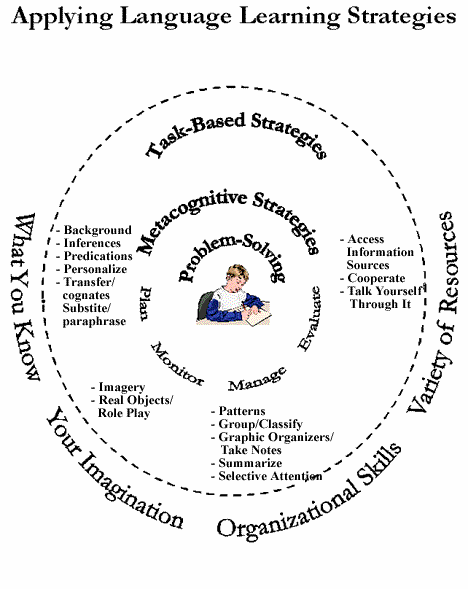TESOL instruction places a great emphasis on students’ ability to listen and speak, more specifically task-based learning. Listening is an essential process that allows for the development of a second language (Cambridge Guide, 166). Additionally, speaking requires the development of a specific type of communication skill different from what is required of writing skills (290). My ideal ESL classroom would focus on listening and speaking because those skills can only be obtained through specific training, which can only be accomplished through classroom time. My ESL syllabus would be full of activities that put a huge emphasis on speaking, listening and comprehension, such as listening to music, watching movies/TV shows, oral presentations, impromptu conversations in class and group work.
TBL programming requires teaching that focuses on the creation and interpretation of meaning and is organized on the basis of appropriate sequences and variations of communicative tasks and meta-communicative, such as form-focused and learning-focused tasks. TBL depends on a sequence of communicative tasks, which refers to involving students in comprehending, manipulating, producing or interacting in the language being learned and the focus being on meaning rather than form or grammar. It is easier to teach students a set of rules and grammar, but much harder to teach them meaning and understanding of the language itself. Many countries outside of the United States and Western Europe teach students by forcing them to memorize. So those students learning English as a second language can easily memorize grammar and language rules, but interpreting language is not as easy.
An element of TB is listening, which is “a goal-oriented activity” that “involves ‘bottom-up’ processing (in which listeners attend to data in the incoming speech signals) and ‘top-down’ processing (in which listeners utilize prior knowledge and expectations to create meaning)” (168). Anthropologist Bloomfield maintained that a student could only learn to speak a language by listening and imitating native speakers (176). In my ESL classroom, I will maintain an English-only speaking zone and I will only speak to the students in English and will require them to do so as well.
Strategies that focus on listening involve four main properties of the spoken language. The first is the phonological system, which refers to the phonemes that are used in a particular language. The second property is phonotactic rules, which refer to the sound sequences that a language uses to make up syllables. The third property is tone melodies, referring to the variations in tones that are used to indicate lexical or discourse meanings. The last property is the stress system, which refers to the manner that lexical stress is set within an utterance (210-211).
Another element of TBL is speaking. ESL teachers began to focus on speaking in the last two decades (293). ESL instruction now includes teaching grammar while including the teaching of interactional notions, which focuses on issues of formality and functions. Second, communicating and teaching meaning go hand in hand (315). Speech production includes four processes: conceptualization, formulation, articulation and self-monitoring. The first focuses on background information or knowledge. Formulation is about finding words and phrases to express one’s self. Articulation is the physical expression of those words and phrases. Self-monitoring is a person’s ability to identify a mistake and self-correct it (325-329).
MY TBL activities would include teaching students how to introduce themselves to others. Teaching them grammar as it relates to speaking, for example the difference between is and are. Another activity would be a show and tell, in which I would ask students to bring in a hobby of theirs and explain what they enjoy about this hobby to the class. I would also show students popular TV shows, such as Friends or How I Met Your Mother. Then we would have a conversation about some of the phrases heard while watching those shows. My classroom activities would focus on listening and speaking so that students would become more comfortable with the English language.
Using TBL and communicative tasks forces students out of their comfort study zone into an interpretation zone. Communicative tasks result in outcomes through an exchange of meanings. One outcome is the exchange of information through the spoken and written forms. Asking students to give or carry out instructions, solve a problem or exchange anecdotes with one another. It is an important element of TBL that students be able to carry out these tasks free of any specific language rules so that they could achieve the outcome of understanding the language. Therefore, TBL approaches, such as listening and speaking, focus on language development by language use and put language form development as a secondary focus.
TESOL Viewpoint brings alumni essays on teaching English as a second language. This viewpoint focuses on task-based learning.



